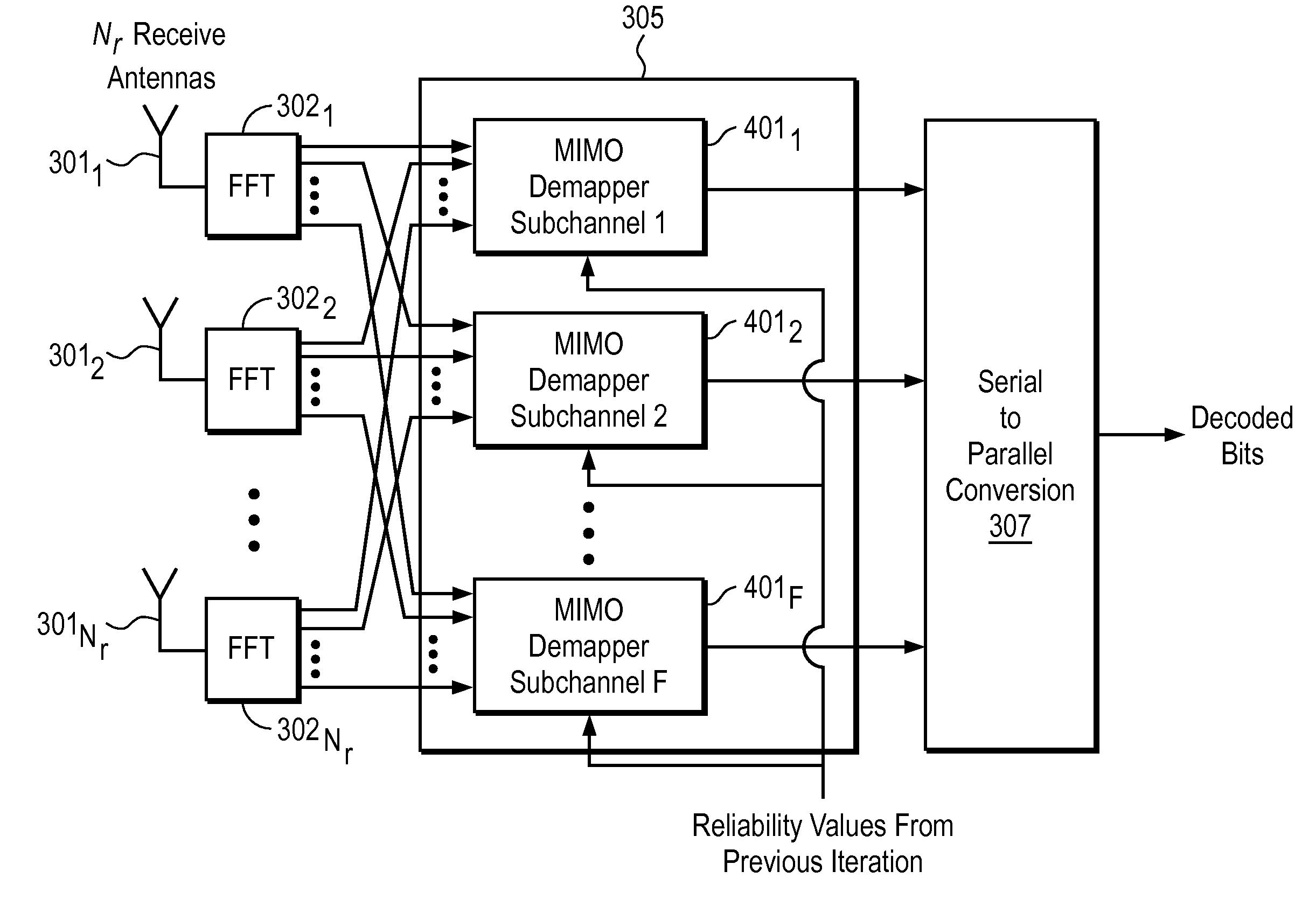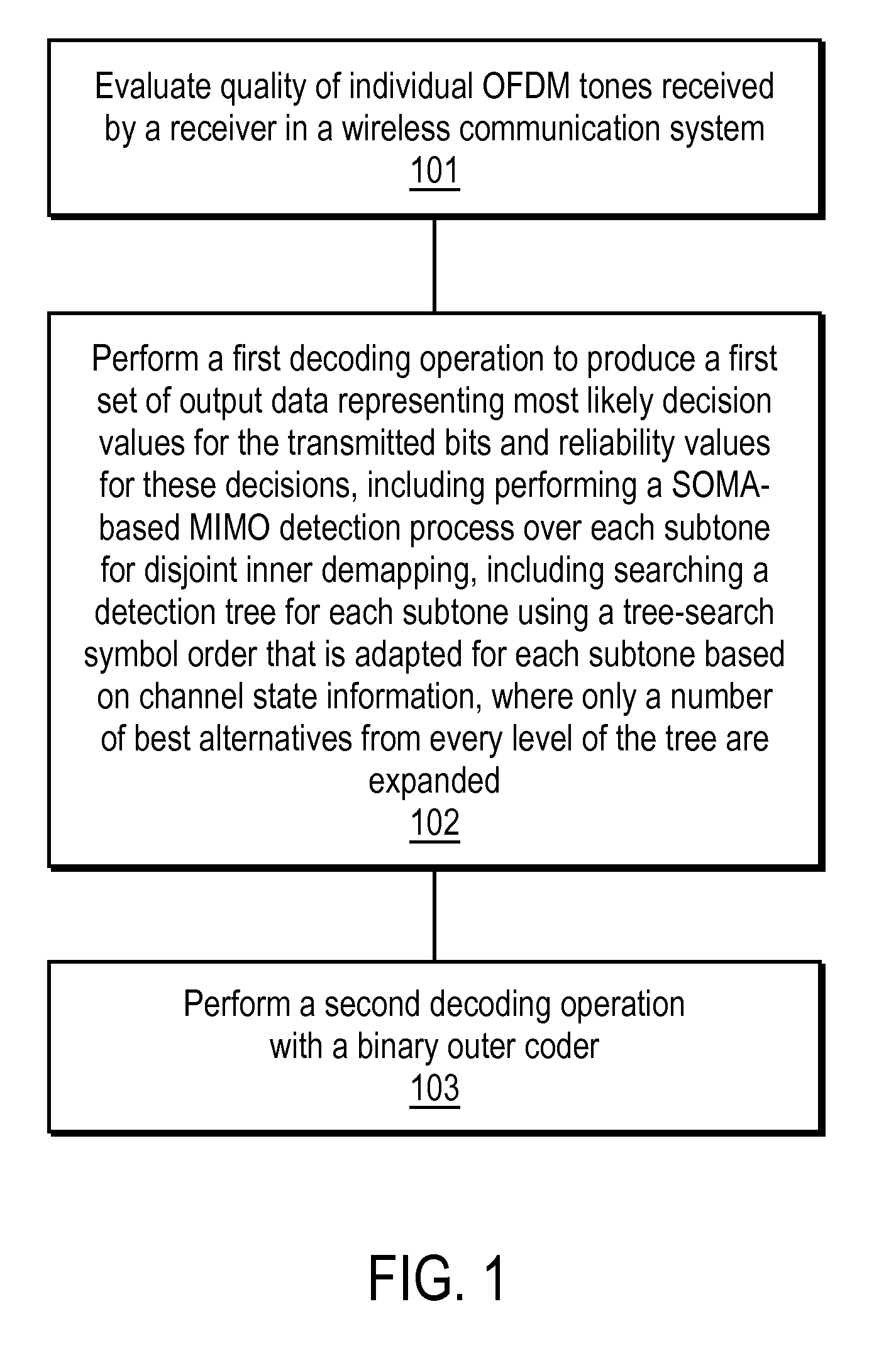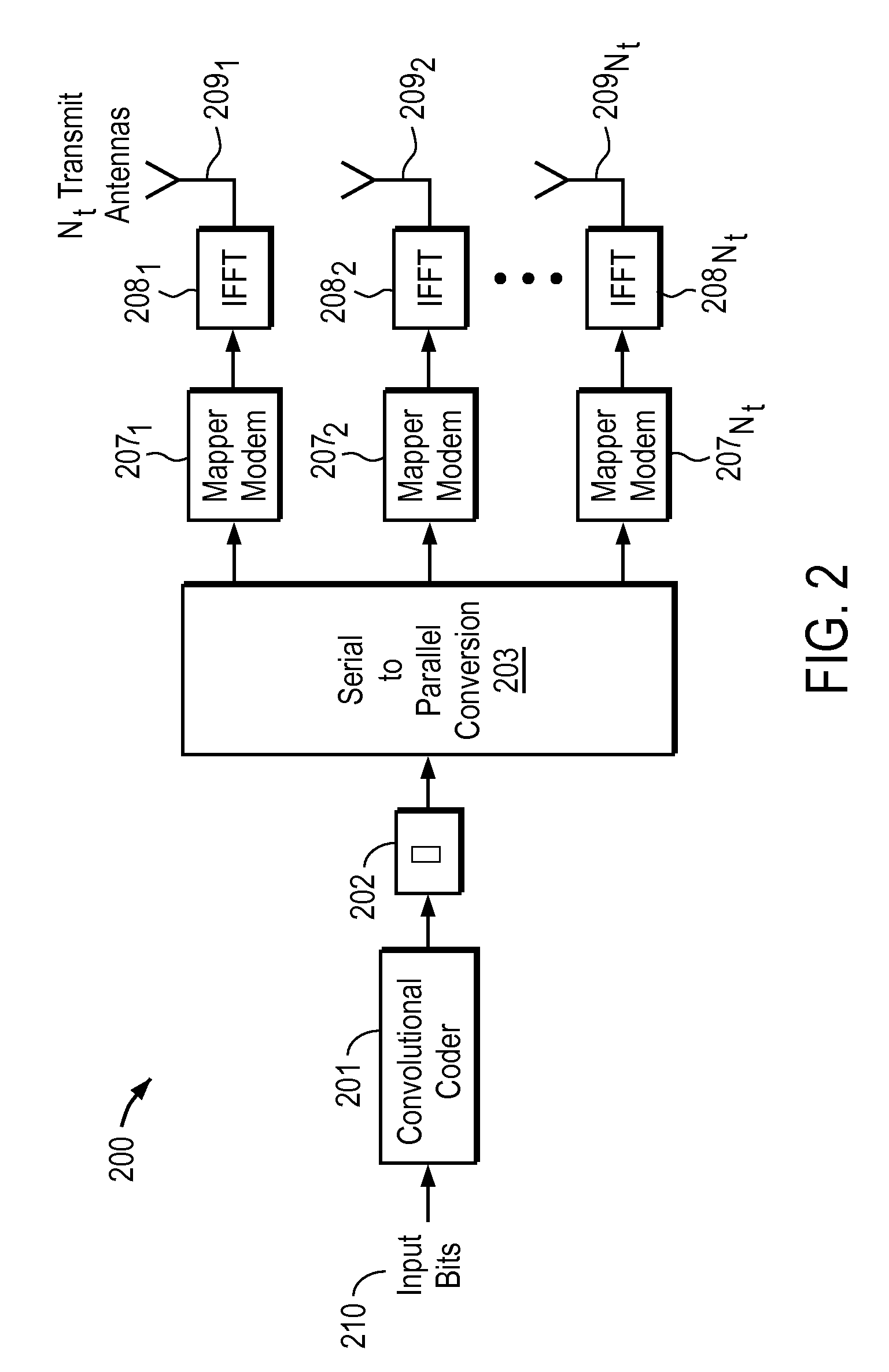Tree position adaptive soft output m-algorithm receiver structures
- Summary
- Abstract
- Description
- Claims
- Application Information
AI Technical Summary
Problems solved by technology
Method used
Image
Examples
Embodiment Construction
[0026]Methods and apparatuses are disclosed for adaptive reduced complexity receiver structures. In one embodiment, the disclosed techniques deal with receiver complexity reduction for MIMO / OFDM / BICM / ID. The disclosed techniques can also be used with MIMO / OFDM / BICM / ID systems that also employ an inner orthogonal or quasi-orthogonal space-time block code. Also, the transmit antennas need not be collocated, although, typically they are collocated.
[0027]In one embodiment, a detection process is associated with the aforementioned transmission systems. This may consist of an inner / outer decoder structure that may also exploit iterative (turbo-like) decoding, where both the inner decoder (MIMO demapper) and the outer decoder perform soft-in soft-out (SISO) detection / decoding. One system component contributing to the complexity is typically the inner decoder, referred to as a joint demapper.
[0028]One class of inner-decoder algorithm on which the invention can be applied is the reduced-comp...
PUM
 Login to View More
Login to View More Abstract
Description
Claims
Application Information
 Login to View More
Login to View More - R&D
- Intellectual Property
- Life Sciences
- Materials
- Tech Scout
- Unparalleled Data Quality
- Higher Quality Content
- 60% Fewer Hallucinations
Browse by: Latest US Patents, China's latest patents, Technical Efficacy Thesaurus, Application Domain, Technology Topic, Popular Technical Reports.
© 2025 PatSnap. All rights reserved.Legal|Privacy policy|Modern Slavery Act Transparency Statement|Sitemap|About US| Contact US: help@patsnap.com



